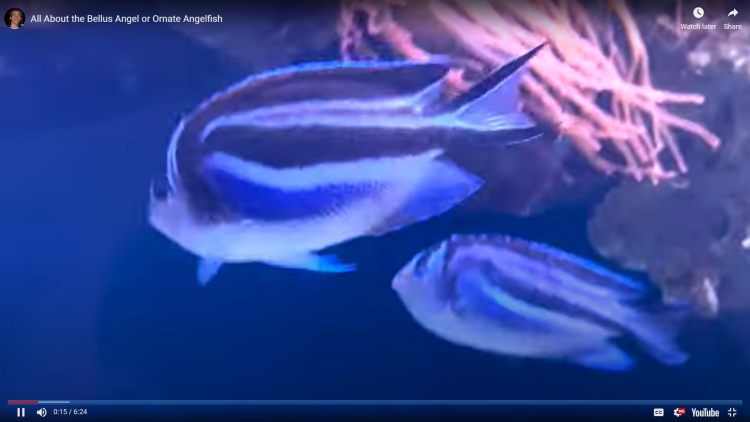All About the Bellus Angel or Ornate Angelfish
- Oct 09, 2023
- Anshika Mishra
- 455 0 0

In this article, we'll learn about the Bellus Angelfish, also known as the Ornate Angelfish. The females will be much more sought after as they have a very dark blue coloration that pops under the right LED lights. At the same time, the males are usually tan with an orange accent.
A school of these swimming around is an incredible sight in the aquarium.
Price: $250 for one Bellus Angelfish.
Tank Size: 100-gallon or larger as these Angles can get up to 7 inches long. Whenever you have larger fish like that, they need more room to swim around, needing more food, which eventually leads them to produce lots of waste in the tank.
Care Level: Moderate. They can take some time to adjust to the tank setting and can also be stingy when feeding, mainly when you feed new food. They do best in a seasoned reef tank with lots of live rocks for all ages and explore through the caves and other hangings throughout the day.
Temperament: They are peaceful fish to have. You don't run into much aggression or territoriality from them unless you try to put two males together in the tank. Then, you'll see some fighting between the two.
They are reef-safe Anglefish to have. They do not nip at your soft or stony corals, not even you clam mantles like a typical anglefish does.
Water Parameter
Temperature: 72-78
dKH: 8-12
pH: 8.1-8.4
Salinity: 1.020-1.025
They are deep-water reef dwellers. So, a darker tank is better for them. More blues grow a long way in helping them be comfortable in the tank setting.
Like clownfish, you might see them reproduce in a larger reef tank. If you have a pair in the tank or a school of them, it'll be difficult for experienced reefers to keep that fry alive.
Diet
The Bellus Anglefish is an omnivore. So, feed them plenty of algae to the fish. Algae should be the main thing in their diet, colors bright, health up, and if there ever is a chance that they catch a disease or parasite, that algae in their system will help them heal. You also want to feed plenty of meaty food.
Compatibility
You only want one male in the tank at any time and as many females as you want. They do well with other reef fishes, too.







About author